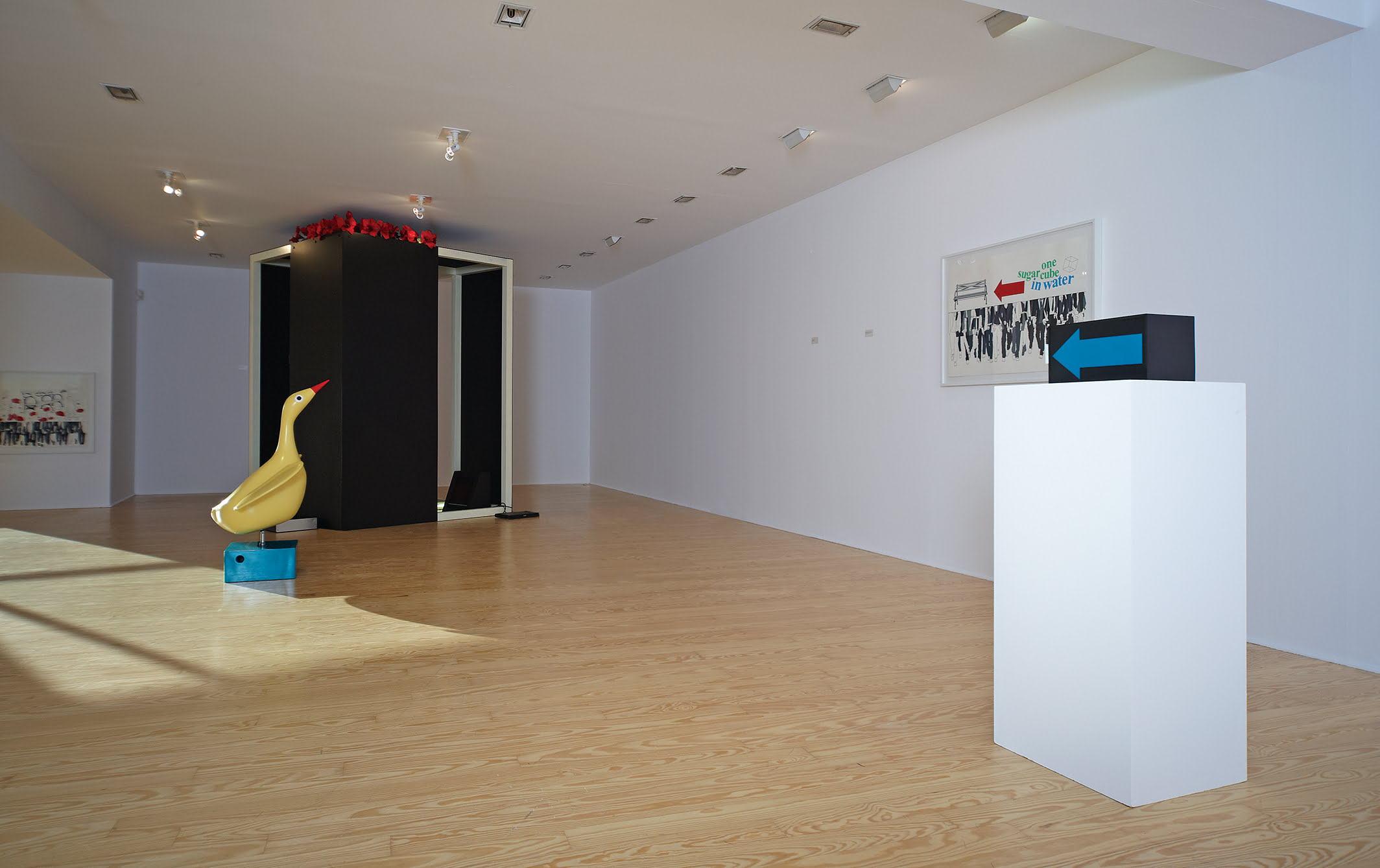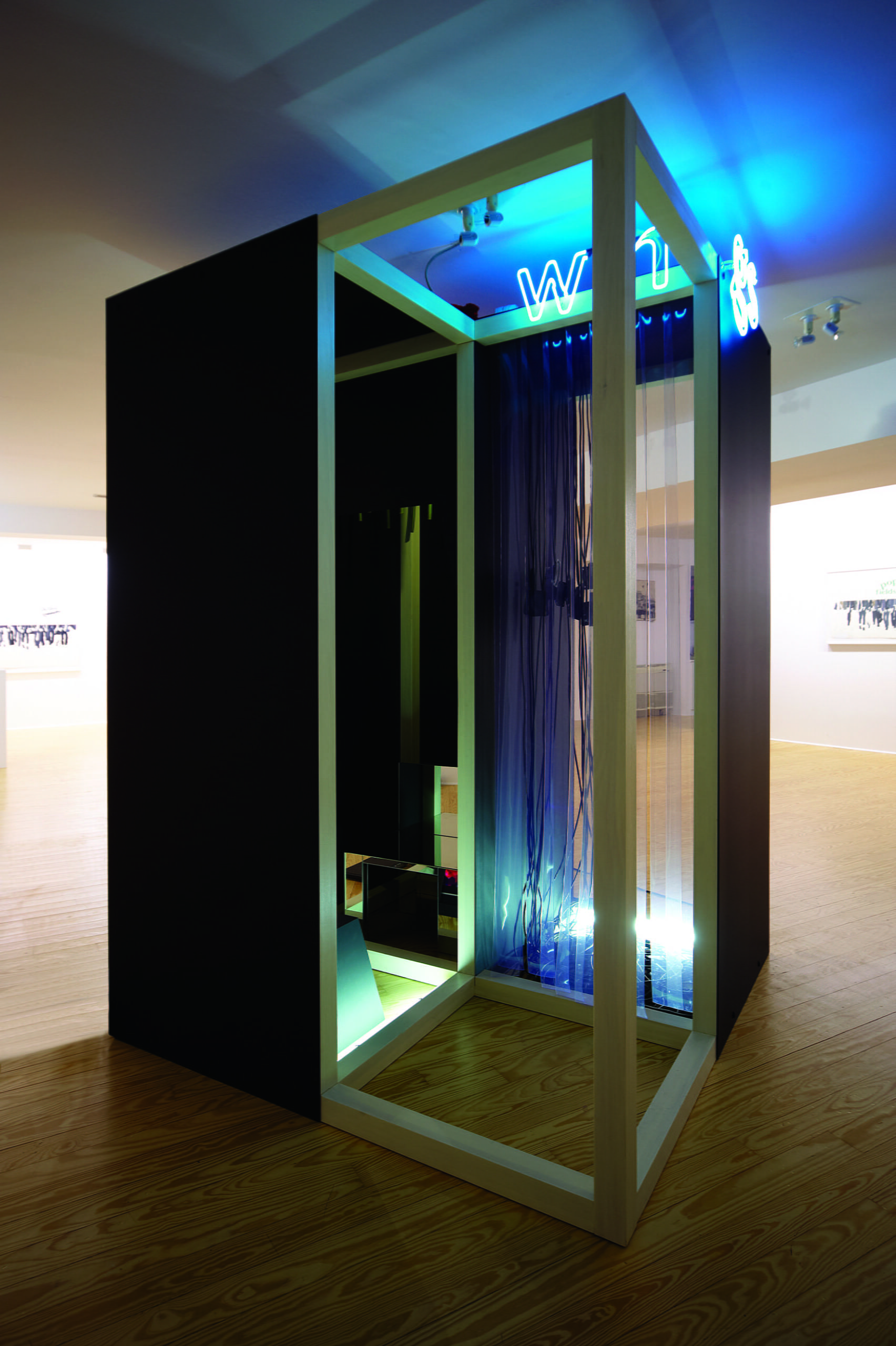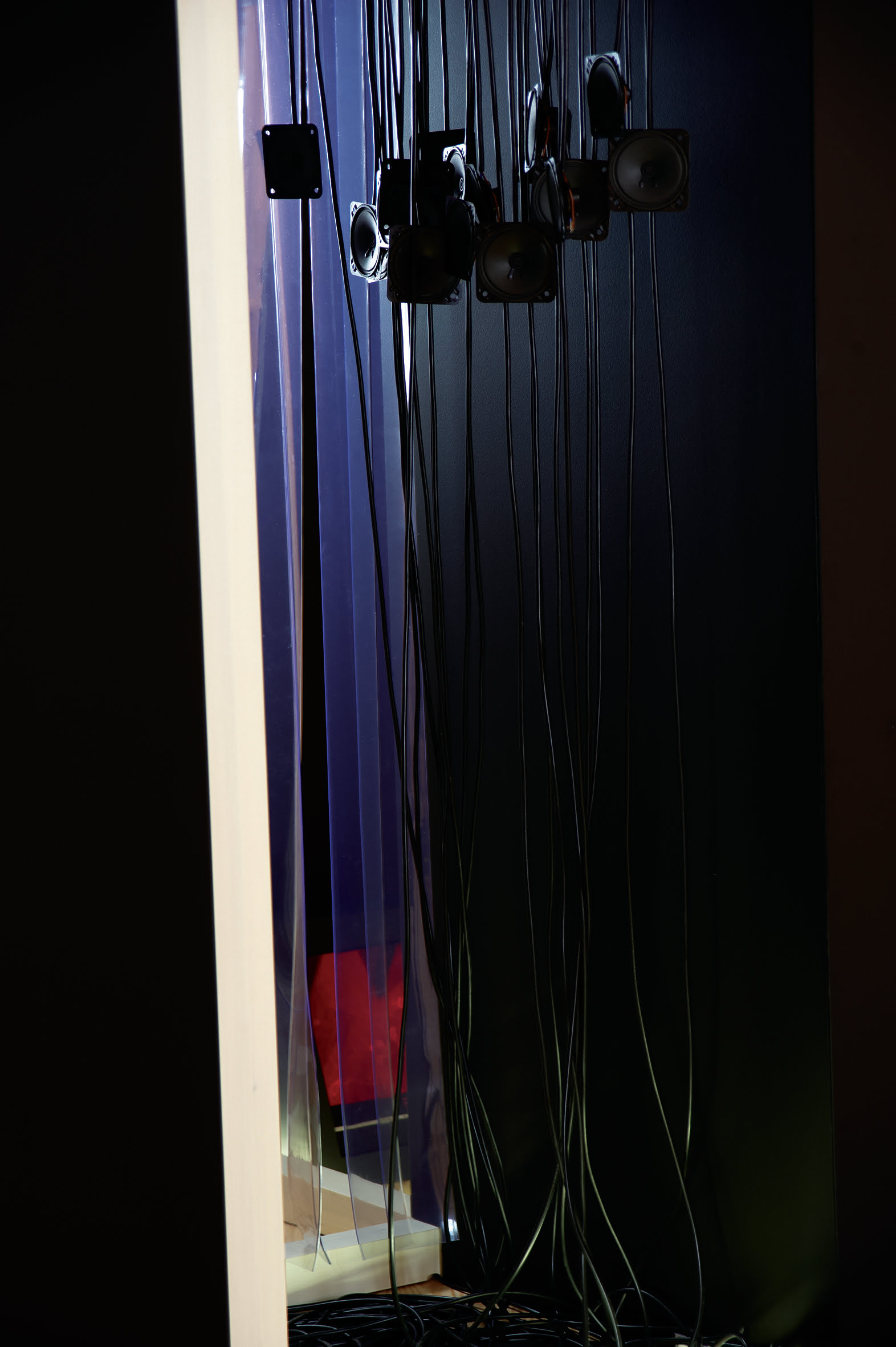Three Songs
2009
Heard in the Dark
We can never see past the choices we don’t understand – The Oracle, The Matrix
Imagination at wit’s end spreads its sad wings – Samuel Beckett
Describing Company (1979), one of Samuel Beckett’s later and less known prose pieces, the scholar Dirk Van Hulle notes: ‘Beckett started writing Company in May 1977. In August the actor David Warrilow asked Beckett if he wanted to write a play for him; on the first of October Beckett wrote a letter to Warrilow suggesting a central theme: “My birth was my death”, emphasizing the undeniable fact that each person happens to be born at the very moment his process of dying begins’. ¹
Read MoreIndeed, in the text that Beckett finally published, opposites do not merely coexist but also influence one another: the temporal distance between birth and death evaporates; binaries of expressed life are nullified, and the cycle of being resembles an exploding star. This way, the equation of two borderline situations, which takes place in the mind of an elderly man who anguishly tries to relate to images from his past, constitutes a metaphor for the power of the imagination but also a critical inquiry on the phenomenology of perception and the awareness of the senses.
Like most of Samuel Beckett’s works, Company goes beyond the concerns of the period in which it was written, posing fundamental questions which marked the philosophical thought of the 20th century and continue to hold a leading place in today’s theoretical discourse. Anna Lascari’s latest exhibition mirrors some of the surrounding conceptual themes we find in Company, as well as in the texts of, among others, Henri Bergson and Maurice Merleau-Ponty, which complement and recontextualize Beckett’s prose piece. Adopting the introspective outlook of a creator who gives particular attention to the formation and function of images, Lascari examines the personal experience of time in relation to the concept of duration. This is why her exhibition, with the Beckettian title PINK, is set in a way that makes the viewer feel as if s/he is traveling through time. ²
The first stop – or the ‘prelude’, to use a musical term – of this journey is a series of drawings depicting images and symbols seemingly unconnected. However, in a closer reading, one discerns an inner rhythm and a concordant conversation in each composition – a “phenomenological melodiousness,” as Lascari accurately observes. These drawings resemble bizarre music scores which decelerate the gaze of the viewer – hence, the title Speed Down – by challenging her/his knowledge and imagination. Here, no image is “innocent” or devoid of reference. The bench, for instance, does not only symbolize the wisdom and mastering of time, but brings to mind images, mainly from popular movies or photographs, in which the protagonists – like Forrest Gump, the Prophet in Matrix, or the writer Jorge Luis Borges – have influenced our perception of time and “the journey of life”. In a similar manner, the image of Wonder Woman makes reference to Dara Birnbaum’s classic video; the butterflies to Vladimir Nabokov; Superman and the children’s swimming floats to Jeff Koons, while the red arrows and text allude to the subject matter of Ed Ruscha. In this play of memory transference, the most characteristic example is, perhaps, the sugar cube, which explicitly refers to philosopher, Henri Bergson’s illustrious metaphor of the notion of duration. In other words, the enigmatic iconography of Lascari’s drawings demonstrates how time is both an inconceivable paradox and a regulating principle which, commonly, through recollection, defines all aspects of our existence.
The second resting place of the passage is Three Songs: a three-part installation consisting of the homonymous structure, a goose made of plaster called Dorothy, which caws every three seconds, and a curious ticking Clock in the form of an arrow, as seen on the upper half of the drawings. If the sounds of Dorothy and the Clock provide the tempo of the viewer’s movement in the exhibition space, the imposing structure forms a space with an “emphatic closure,” according to Lascari’s description. While loitering in the four rooms of this black monolithic structure, the viewer is confronted with rapturous gazes of death and, consequently, birth. Reminiscent of the heroes of modernist epic novels, the fundamental theme here is self-consciousness. Lascari creates a setting, awakening for the senses. It’s no exaggeration to say that it “converses” with the last scene of Stanley Kubrick’s 2001: A Space Odyssey, where an old man is transformed, under the shadow of a monolith, into a newborn baby. Moreover, the bouquet of amaryllis – a symbol of beauty, pride, and determination – and the word Wings, which adorn the upper part of the structure, lend the piece an unreal dimension, equally anguished and morose. From what we have seen so far, the installation’s third song is nothing but a performative call: the ideal home of the Last Man. In this tomb-like construction, where the viewer can address her/his idol and hear in the dark a little voice whispering “hold on tightly, let go lightly”, the individual self dies only to be reborn in the form of a multitude, a scattered memory from the past: “…In the midst of a tumultuous crowd of people on foot constantly moving: there was, he said, a heavy traffic, a coming and going that did not calm down at night, as though every single person were always outside, drawn by the pleasure of circulating without hindrance, of being part of a crowd and then losing himself in an even larger crowd. He became exhilarated at this memory.”
By the end of Lascari’s proposed journey, whether listening to Beckett or Blanchot, the spectators are transformed into heroes of an inventive narration which makes their relationship with time – and its understanding – less remorseful than it was in the beginning.
Christopher Marinos
Art historian – Curator
Translated by Maria Petrides
1. http://www.litencyc.com/php/sworks.php?rec=true&UID=5886
2. Maurice Blanchot, The Last Man, trans. Lydia Davis, Ubu Editions, 1987, p. 31.








